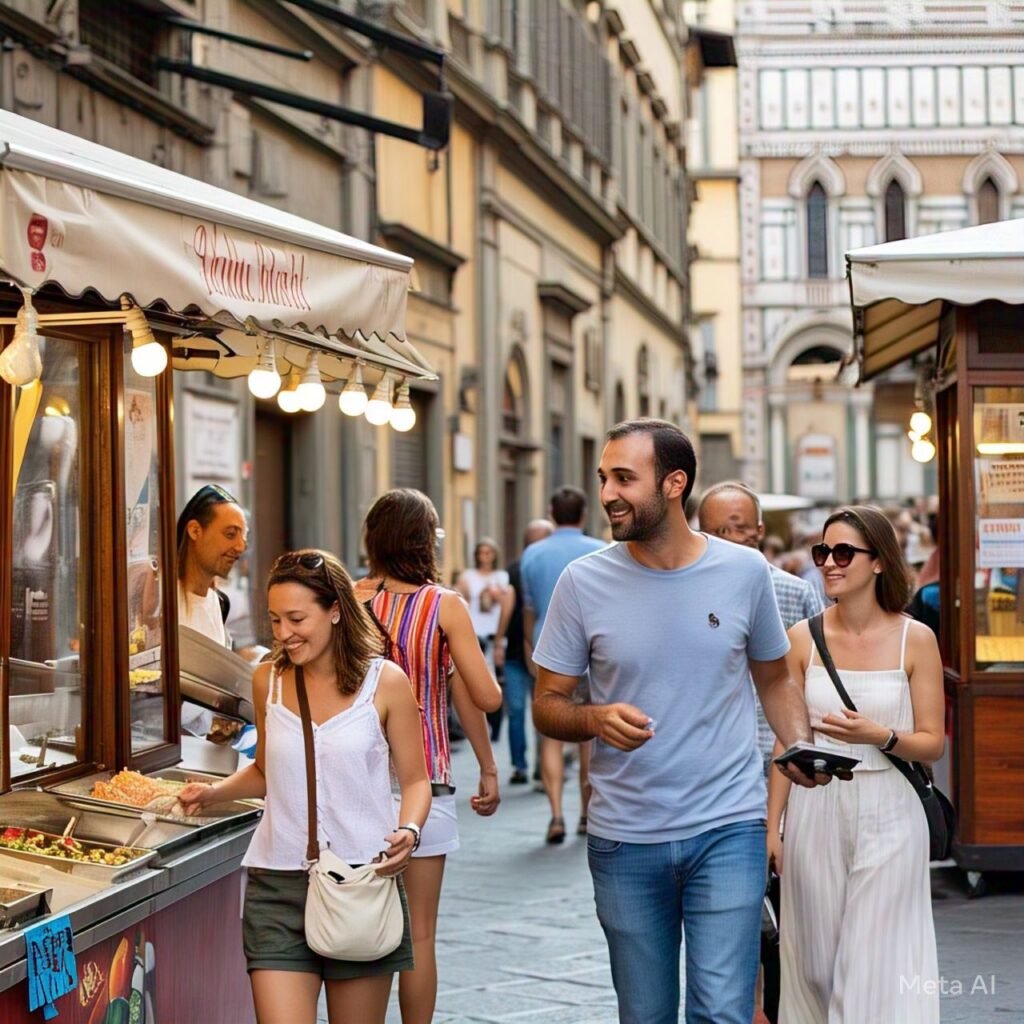
20 European gastronomic experiences you simply must have
Here are 20 gourmet activities that I and other travel writers recommend for your bucket list in Europe, ranging from the greatest food tours to amazing cooking classes, workshops, and masterclasses.
1. An Italian pasta-making class in Bologna

Bologna, often known as La Grassa, or “the fat one,” is regarded as one of Italy’s top culinary destinations. The region of Emilia Romagna is home to some of the most well-known Italian foodstuffs, such as prosciutto, parmigiano reggiano, and balsamic vinegar.
Tortellini in brodo, which are delicate pasta packages filled with minced pork in broth, is the most famous of the numerous unique Bolognese recipes. This must be in Italy if you’re going to eat it anyplace!
One of the best things to do in Bologna is seek out this wonderful dish and just eat it. But you can take it one step farther. Taste Bologna, one of the greatest food tour businesses in the city, provides seminars where you may learn from a pasta master. They provide small sessions where you can learn how to make these elaborate tortellini, roll out the dough, and produce fresh pasta from scratch. You then savor the results of your labor while sipping excellent Italian wine.
The fact that it’s a talent you can use at home is the finest part. While some people may remember a memorable meal at a restaurant, a culinary tour allows you to relive that experience repeatedly.
Lisbon, Portugal’s Pastel de Nata workshop
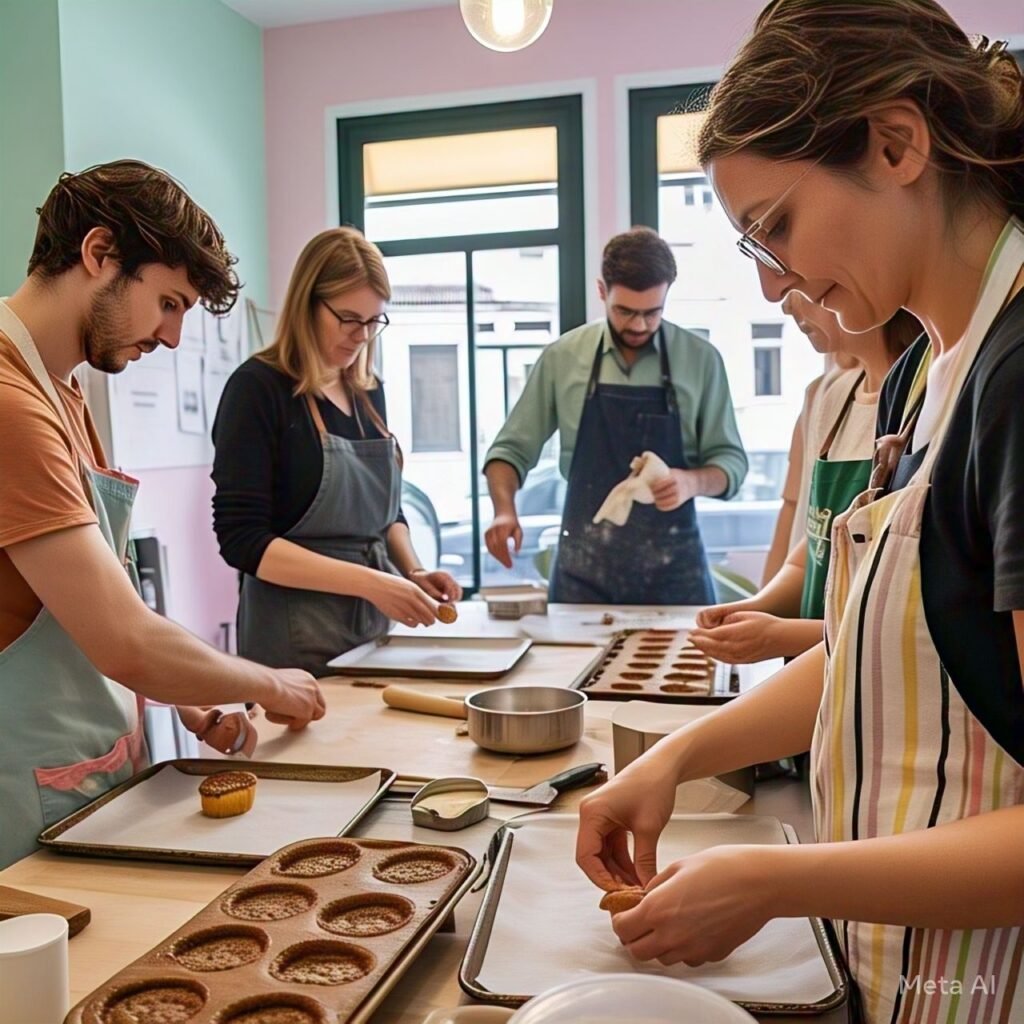
Trying a Portuguese custard pastry, or a pastéis de nata as they’re known locally, is one of the top things to do in Lisbon if not the entire of Portugal. Why not take a cooking lesson at Pastelaria Batalha, one of Lisbon’s favorite bakeries, and learn how to prepare them?
Classes are run by João, who has been baking pastries since he was 14 years old. A hands-on pastry-making session, three tarts to taste there or take home, a drink of your choice, and a tasting of some of the bakery’s other specialties are all included in the two-hour seminars, which are offered twice a day at 2 and 4 p.m.
To sample the original, visit Pastéis de Belém in the Belem neighborhood of Lisbon. In 1837, the tart of the same name was originally made there using an old recipe from the Mosteiro dos Jeónimos. The specific formula remains a secret to this day.
Long lines are common, but the benefits outweigh the costs. Notable custard pies can also be found in Lisbon at Manteigaria, Pato Real, Pastelaria Versailles, and Pastelaria Cristal. They are the ideal memento of Portugal, so pick up a box to bring home.
A culinary tour in the morning in Budapest, Hungary
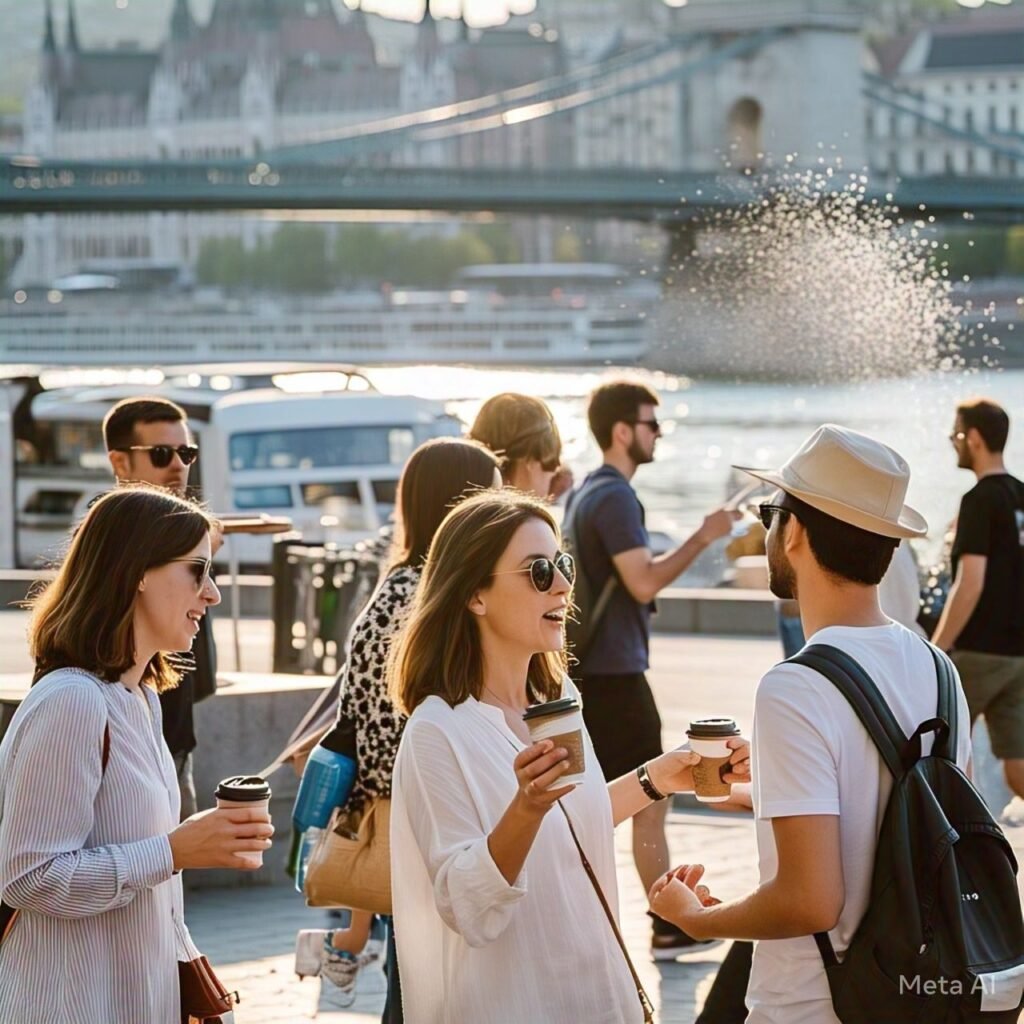
Are you not a morning person? Taste Hungary has the solution. Their morning food tour in Budapest lets you kick start the day the royal way with a shot – yes a shot – of Unicum.
The nation’s ruler used to take cum to help calm his stomach. This medicinal herbal liqueur is becoming a popular alcoholic beverage among partygoers in ruin bars and tourists on food tours.
You won’t be going to Pest’s notorious ruin bars because this is a day trip, but make a note of their locations and come back later for a shot of palinka.
Now that your tummy is full, it’s time to sample some of Hungary’s hearty dishes, like soups, stews, and langos (pasty, sour cream, and cheese). Many of the restaurants, cafes, butchers, and food markets on the multi-stop trip have been there for so long that they have withstood wars, genocides, royals, and significant political upheavals.
Incorporate this culinary adventure into your Budapest itinerary to discover the history of the strudel.
The trip concludes with alcohol consumption, but in a more upscale setting—an subterranean wine cellar. Here, you get to try the delectable ‘bull’s blood’ from Eger, one of Hungary’s most unique sites. The ideal way to end a culinary tour that leaves you feeling nauseous.
Truffle hunting excursion in Croatian Istria

Anyone who considers themselves a foodie must make time to visit the picturesque region of Istria while planning a vacation to Croatia. Although the region is well-known for its excellent Italian Croatian food, the elusive white truffle is the real attraction.
The vast Motovun woodland around Istria, one of Croatia’s most picturesque areas, is home to the rare white truffle mushroom. Fresh white truffles are served in every restaurant during the white truffle season, which runs from September until the beginning of winter, and they cost a fraction of what they would in France or Italy.
The chance to take a truffle hunting excursion is even more exciting than eating white truffles. Great tours are available at the third-generation truffle farm, Karlic Tartuffi. A brief overview of truffles and their history in the area is included in the schedule.
The real fun starts when you get dressed and journey through the Motovun Forest with your guide and the truffle hunting dogs. You should wear shoes that you don’t mind getting dirty, or you can borrow some.
Truffle hunting is difficult without the acute sense of smell that dogs and pigs naturally possess, yet trying to find truffles oneself would be quite the accomplishment. With adorable dogs, it’s a delightful day of tromping through the forest. You will then be brought back to the farm to have the most delicious truffle omelette you have ever had.
A tour of Brussels, Belgium, featuring chocolate and beer
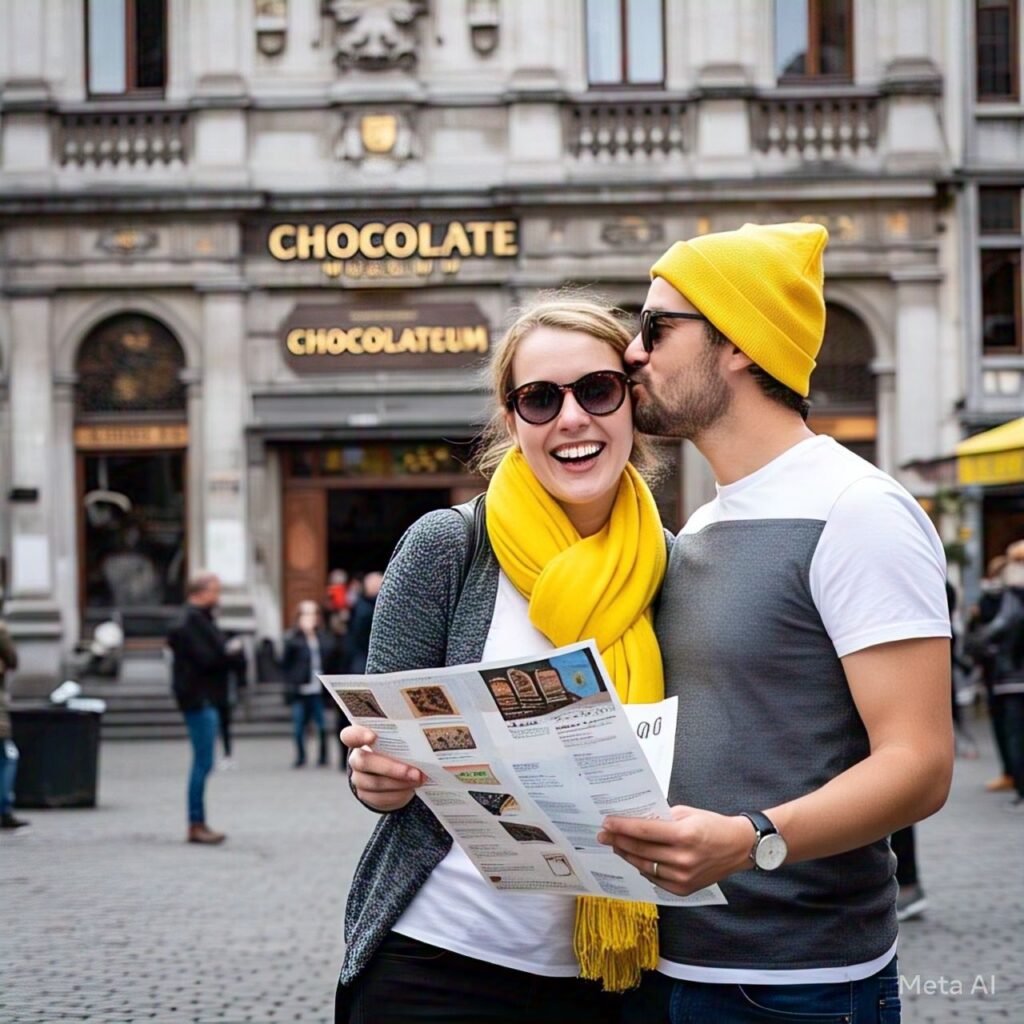
Belgian cuisine, including waffles, fries, chocolates, and strong beer, is highly praised. Try the Brussels Journey Beer and Chocolate Tour while you’re there; it will show you some of the top chocolate bars and stores in the city.
Shortly before World War I, Belgians created a chocolate known as praline. In Belgium, a praline is just a chocolate-covered sweet with a soft center, but in other countries, the term implies a chocolate packed with nuts. Many of the most well-known chocolate manufacturers, such as Godiva and Neuhaus, are still Belgian. However, this tour will take you to smaller chocolate producers like Frederic Blondeel and Pierre Marcolini.
You will taste pralines with a variety of fillings, including Earl Grey and chili-chocolate, on the beer and chocolate tour. Before the beer tasting, the tour starts with four distinct chocolate tastes. That’s because before you start drinking, you’ll appreciate the superb Belgian chocolate more.
Extremely strong ales are typically preferred by Belgians over lagers. Monks actually make a lot of the most well-known Belgian beers. Some of these ales will be available for you to try during the tour, but don’t drink too much of them at once because Belgian brews have a very high alcohol content—nearly 10%.
Sour beer is another well-known variety of Belgian beer. A unique wild yeast is used to make these. They frequently have fruity flavors, such as raspberry or cherry. It’s fortunate that the beer and chocolate tour allows you to experience one of the best sour beers in Brussels since you really must try one before you leave!
Florence, Italy, food tour
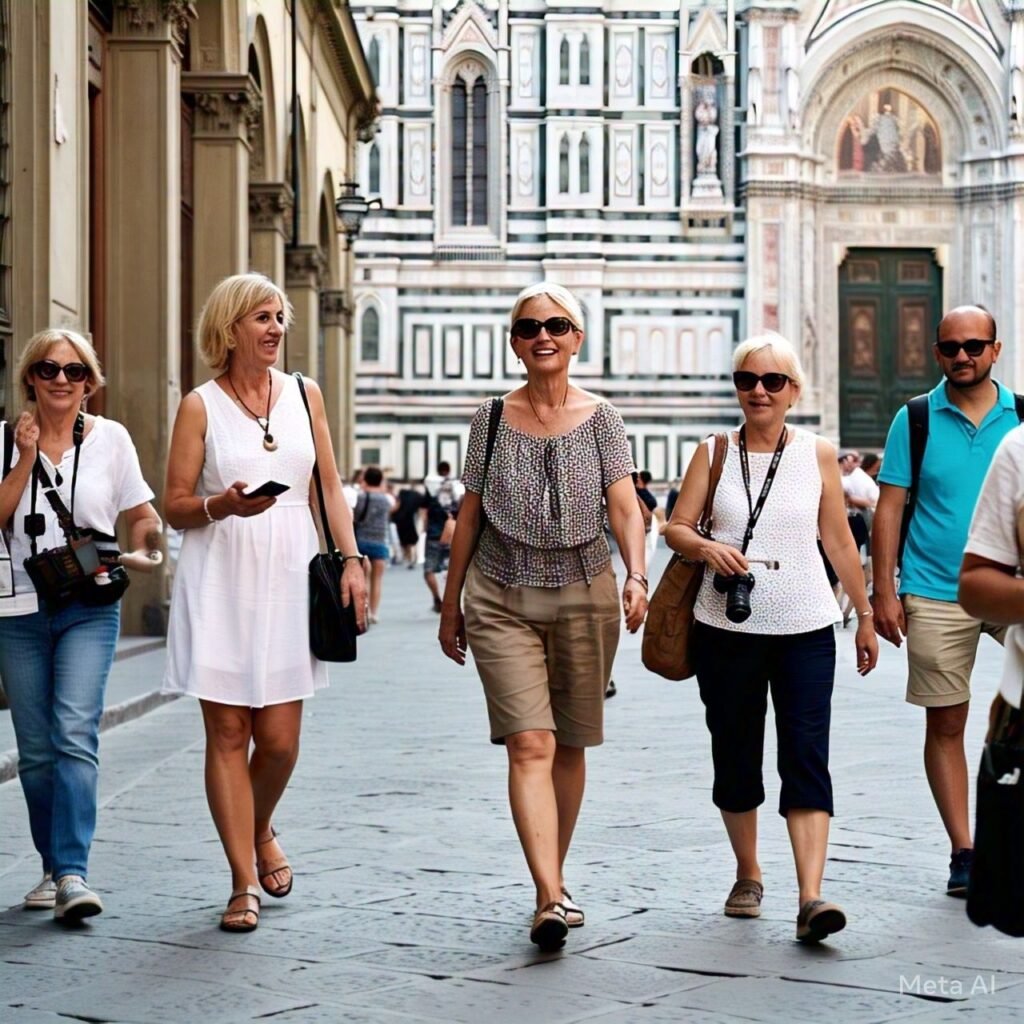
A cuisine tour of Florence, Italy, is among the most wonderful culinary experiences you can have overseas. Florence is renowned for its excellent culinary scene, and you can experience the most of what this area has to offer by going on a food tour. After all, without enjoying a complete dinner consisting of antipasto, primo, secondo, and dolce, one cannot truly appreciate Italy.
A cuisine tour with Walks of Italy is something I wholeheartedly endorse. The more genuine side of Florence that is separated by the Arno River is the foodie Oltrarno neighborhood, which is explored by their local guides. In addition to providing you with plenty of food and wine to satisfy your hunger, the Dine Around Florence tour takes you to a less-traveled area of the city.
Before heading to your first destination on your tour—the medieval basement of a nearby wine shop for an aperitivo—you will meet your group at Piazza Santo Spirito. This light snack served with wine will prime your taste buds for your next course: a beautiful antipasto spread at La Prosciutteria.
Prior to the grand finale, you will then go to a local restaurant for primo and secondo. Naturally, this would be a scoop of gelato from an artisan gelateria before your guide lets you spend the evening seeing the most stunning city in Italy by yourself.
A tapas tour in Spain’s Andalucia

Tapas are a popular dish in Spain’s Andalucia region, with variations found in each city. Malaga is not an exception. This charming seaside city is well-known for its beaches and history, but it’s also worth starting your trip with a food tour to get a sense of the local cuisine.
You will sample local delicacies, such as sweet wine brewed with local raisins, at multiple locations during the Spain Food Sherpas evening tapas tour. Additionally, you will get the opportunity to sample wines and vermouth produced locally.
You will have the opportunity to sample a range of tapas on your tour, including fresh seafood and Spanish ham. As you explore the city and take in the vibrant nightlife, you’ll discover the history of the cuisine and how particular foods and ingredients became well-known in this area.
Along with giving you tips on where to go and what to eat while visiting Malaga, the tour guide will show you areas you most likely wouldn’t discover on your own. This is an excellent method to eat authentically delicious meals rather than the mediocre tourist fare.
A tour of champagne from Paris, France

cuisine isn’t even a part of one of the greatest cuisine tours in Europe and the world. Champagne instead.
Travelers from all over the world come to France to enjoy one of its most well-known and acclaimed beverages. The Champagne area of France is a fantastic day trip destination from the capital, and there are a number of Paris Champagne tours that offer you the chance to sample several types of the drink as well as a background education on it.
Many tourists in the Champagne area are unaware of the influence World War II had on the esteemed beverage. In addition to providing information on this, a Champagne tour will allow visitors to comprehend the significance of Champagne cellars for individuals seeking safety from the bombings in and around Reims, France’s unofficial Champagne capital. Even while the history of champagne is fascinating, nothing compares to actually tasting the drink.
Every budget can find a Champagne tour that suits them. You may enjoy a reasonably priced tour of the cellars at Lanson, a Champagne that grows its grapes inside the city of Reims. Consider taking a private tour of Moët & Chandon if you’re looking for something a little more premium. You should absolutely travel to France and enroll in a Champagne tour if you’re searching for a European food or drink tour that will make an impression.
A culinary excursion in Barcelona, Spain

Tasting Spain entails going beyond tapas, the well-known, internationally recognized little appetizers and bar snacks. Skip the touristic, franchised tours on your visit to Barcelona in lieu of a more private sampling experience off-the-beaten-path. Local Catalans and former journalists, these guides are dedicated to providing a trip that satisfies your own culinary preferences.
There is no predetermined itinerary when traveling with Aborigens. They prefer to greet visitors first, then watch what the evening has in store. A standard culinary tour would begin at a vermouth bar in the Eixample neighborhood, where you can enjoy mussels and salty chips as an appetizer, which go well with sweet vermouth.
Perhaps you’ll visit a 1930s bodega that still offers inexpensive co-op wine by the jug (and glass bottles of milk!) before moving on to a historic beer hall. Enjoy a variety of dishes, including as sardine pizza and codfish fritters, before making a last visit to Bodega Sepulveda, which is renowned for its extensive Catalan culinary heritage.
Borracho, a rum sponge cake with lemon and cinnamon, is a possible way to round off an evening full of unforgettable wines and champagne.
In the countryside of Spain, Aborigens also provides couples with personalized private gastronomic itineraries. The professionals will make all of the appointments for your lodging and destination dining when you pick up your rental car! Is there anything better?
Vilnius, Lithuania, food tour

It is not very generally known that Lithuania has very good food. At first look, you might be more inclined to eat at one of Vilnius’s hip vegan eateries than to look for regional cuisine.
Fortunately, Vilnius Urban Adventures is available to take you on a culinary tour of Vilnius and show you the hidden places that locals frequent, all with the assistance of some of the city’s most amiable guides. This includes an overview of Lithuania’s nearly compulsive mushroom hunting customs as well as some intriguing insights into life under Soviet control.
The delectable fermented black bread, the decadent and challenging to prepare cepelinai (called for the zeppelins they resemble), and saltibarsciai, a beetroot and kefir soup that will leave you wanting more, are some of the highlights of a Vilnius culinary tour.
You’ll be treated to some of Lithuania’s best regional beverages along the way, such as the “three nines” liqueur, which is believed to treat a variety of illnesses, the nation’s only rhubarb wine, and kvass, a low-alcohol beer made from black bread that is highly addictive.
If you’re wondering what to eat in Vilnius and want a solid underpinning to understanding Lithuanian cuisine, then the Urban Adventures three-hour Flavours of Vilnius tour is excellent.
Sarajevo, Bosnia and Herzegovina, market and coffee tour

The amazing food and drink scene in Bosnia and Herzegovina could surprise you. For many locals, brewing and drinking coffee is a daily ritual that is deeply ingrained in the area’s history.
Before you hit the streets to go bouncing from tea house to coffee shop, make sure you’ve perfected the art of sipping kahva the Sarajevo way. Food walking tours of Sarajevo Old Town, which include an introduction to Bosnian coffee culture, are provided by the local company Balkantina.
To sample a wide variety of regional specialties, such as smoked meats, specialty farm cheeses, and seasonal fruit and vegetables, you will spend a few hours at two of the city’s liveliest indoor and outdoor markets. After that, you’ll dine at two places to sample the greatest burek in town and eat workers’ fare.
The tour concludes with an outdoor cafe within a medieval caravanserai where guests learn how to enjoy Bosnian coffee, which is quite an art.
Barcelona, Spain: Paella cooking lesson
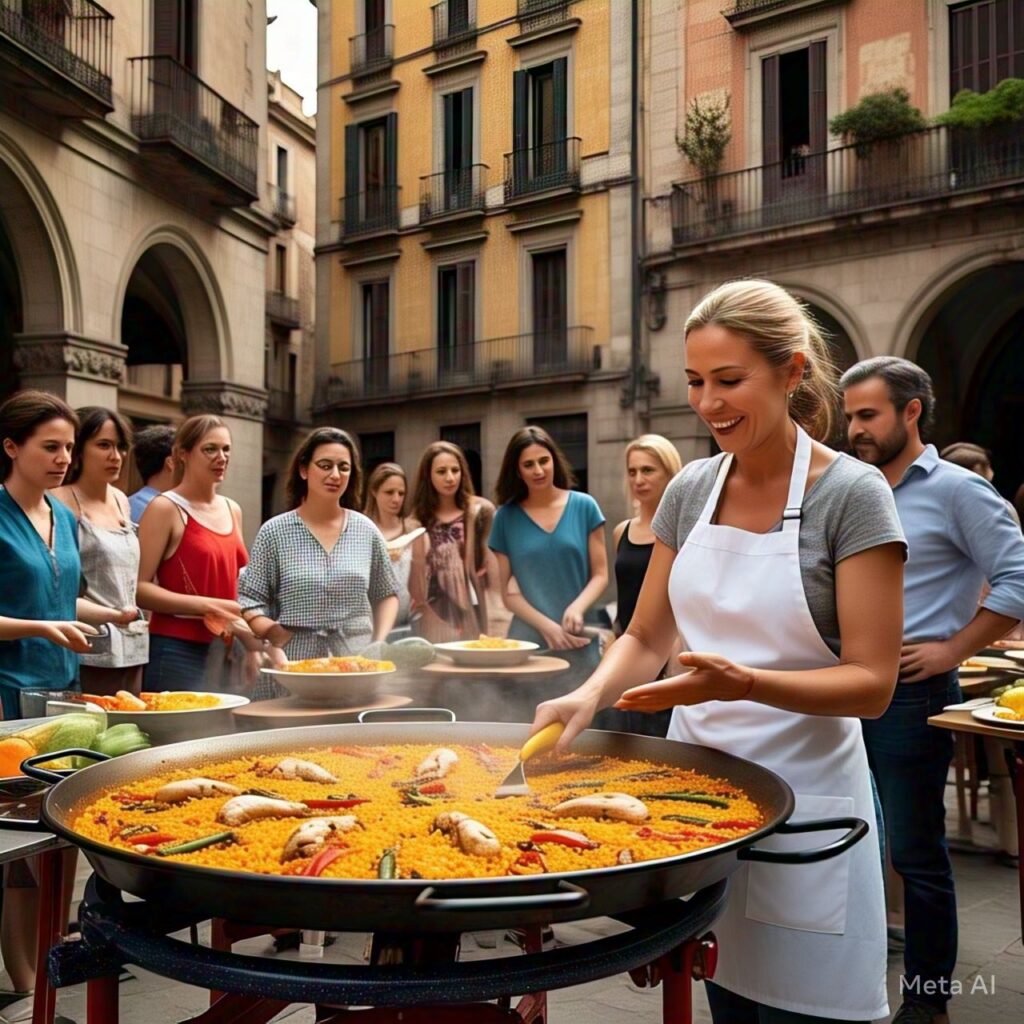
A paella cooking workshop in Barcelona is among the greatest culinary adventures in Europe. Marta Amb Tu Cuinem, also known as Marta’s Private Paella Cooking Class, is run by friendly ex-school teacher Marta who welcomes students into her home to teach them how to make a delicious seafood paella.
Even though Valencia is the traditional home of paella, every Spanish cook has a different idea about the ideal dish. Marta, who is keen to point out that this is her own favorite version, is no exception.
An overview of paella and how to prepare it in a shallow, wide paella pan is given at the beginning of the session. Before you begin chopping and cooking, you will then receive a summary of all the ingredients. Everyone gathers to eat together as soon as the meal is prepared.
The unique aspect of this paella cooking session is that it is held in Marta’s house rather than a restaurant kitchen or classroom. The experience is greatly enhanced by the intimate touch of being in someone’s home. Marta will make you feel like a member of the family with her approachable and educational style.
Tour of Copenhagen, Denmark’s bakeries and pastries

Danish bakeries are always on the itinerary for foodies traveling to Copenhagen. You may get a true sense of the city with private and self-guided cuisine tours. Danish pastries are a must-have for private culinary trips, regardless of the operator you select.
You will be reintroduced to bread in order to comprehend Danish baked delicacies. Danish bakers elevate bread to a new level by frequently adding herbs, seeds, and other flavor and texture components, even though it may be straightforward in other culinary cultures. Every eatery in Copenhagen serves freshly baked bread.
Danish open-faced sandwiches (smørrebrød) are typically made with dense rye bread, while sourdough rolls with cheese, jam, and butter are frequently served for breakfast. For some of the greatest breads in town, visit Laura’s bakery and Torvehallerne, a well-known food hall in Copenhagen, which is the destination of most food and bakery tours.
Beyond bread, pastries are also connected with Danish baking. The history of the Danish pastry and how it originated outside of Denmark are things that most people are unaware of. In 1850, there was a baker’s strike in Copenhagen, therefore bakers were brought in from other countries of Northern Europe, notably Austria. The Danes adored the innovative pastry recipes and baking methods brought by these Viennese bakers.
They persisted, and the majority of the world’s population began to recognize them as Danes. The pastries brought to Copenhagen from Vienna are still referred to as wienerbrød in Danish, which means “Vienna bread,” even though Danish bakers have improved them.
Self-guided cuisine tour of Ljubljana, Slovenia

Few people consider Ljubljana to be a culinary destination. The opportunity to try regional specialties that might otherwise go undiscovered is just one of the many surprises this underappreciated capital has to offer.
Although there are a few food tours available to include in your itinerary for Ljubljana, the bitemojo app is among the most creative methods to discover the city’s culinary culture. Take a self-guided cuisine tour at your own leisure and forget about following a group. You can return later if you don’t have time to see every stop!
This self-guided culinary tour of Ljubljana is a terrific way to find interesting hidden gems. It follows a path that passes by some of the most well-known sites in the city. Don’t worry about missing out on the historical knowledge a tour leader would normally provide you.
Beginning with the Dragon Bridge, the app will showcase the city’s main attractions, provide you with historical context, and recite stories (such as the bridge’s) and other anecdotes. Of course, the narration includes all the information you need about the cuisine and drink you’ll be enjoying, including struklji, a typical Slovenian dumpling, and exquisite Bela Krajina wine.
Canederli making class in Trentino, Italy

Italy is a popular vacation for folks who appreciate trying food, and cooking classes are a typical activity. Although many people concentrate on learning how to make pasta, ravioli, pizza, or tiramisu, Italian cuisine is actually quite regional, with each community having its own unique recipes and traditional cuisine. Making canederli in Trentino’s Val di Sole, one of the most picturesque Dolomite valleys, is one of the most entertaining cooking workshops you can enroll in.
In this region of Italy, canederli are a specialty. They are a type of dumpling that is prepared by cooking leftover bread in a light broth with fresh milk, local cheese and sausage, eggs, and herbs. Because they are designed to provide you with a lot of energy to combat the chilly winter temperatures, they are quite full.
A great place to learn how to make canederli is at Agritur Solasna, a fantastic rural hotel located inside a 13th century stone-house in San Giacomo di Caldes. In addition to learning recipes from the hosts, visitors may enjoy the local way of life here. More than anything else, you can enjoy the peaceful pace of life and the beautiful surroundings.
A tour of Saint-Germain-des-Prés, France, featuring chocolate and pastries

Located on the left side of the Seine, Saint-Germain-des-Près is a charming neighborhood of Paris that is well-known for its cobblestone streets, art galleries, and classic cafes and terraces. Beautiful boulangeries and patisseries with chocolates and flawless cakes in every color can also be found in Saint-Germain. Every significant brand in France’s premium patisserie makes sure to have at least one location in Saint-Germain.
Wine tasting trips and cuisine tours in Paris are well-known. Learning how to prepare macarons or croissants is also a typical activity in Paris. Walking tours featuring chocolate and pastries are a recent craze, and Saint-Germain-des-Près is the ideal setting for these delicious adventures.
Go outside and take a walking tour of the area’s chocolate and pastry shops if the weather in Paris is sunny. In addition to learning about one of Paris’ most famous neighborhoods, you will have the opportunity to sample cuisine from Pierre Hermé, Poilâne, Jean-Charles Rochoux, and Alain Ducasse.
Try some of the classic Parisian cakes, like the financiers, the Saint Honoré, or the Paris-Brest, but also indulge in their most amazing inventions (spoiler alert: they taste better than they look!).
A Greek food tour in Athens
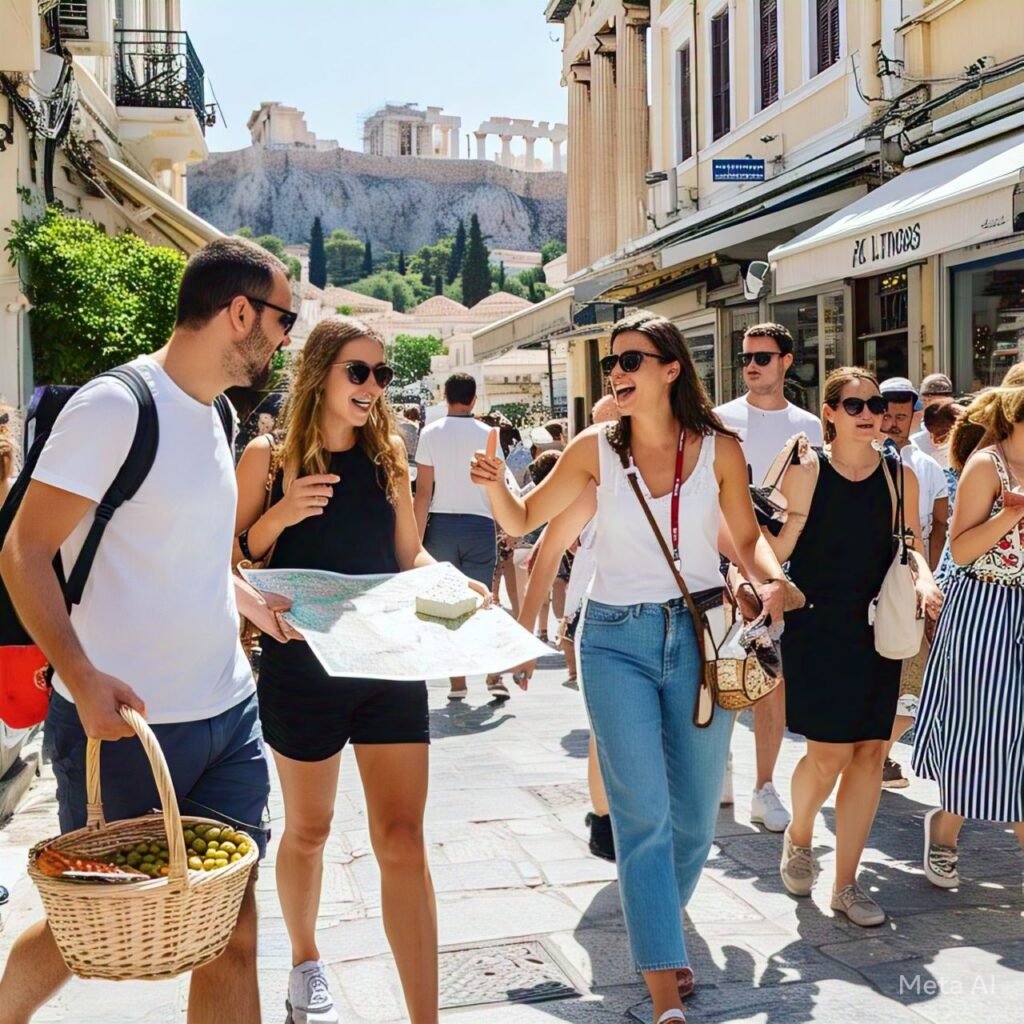
Without a doubt, one of the greatest ways to experience a city is by walking food tours. This is true wherever you are in the world, but it’s dynamite when you combine world-class food with a city that’s a little more difficult to come to know. It’s precisely this combination that makes going on a Greek culinary tour in Athens so enjoyable.
Although Athens is a fantastic city to visit, many visitors arrive without a clear idea of what they want to do during their time there, with the exception of a few well-known attractions like the Acropolis. A strolling food tour can help with that.
Early in your trip to Athens, take a tour (this is a great option) to get a feel for the city, learn a little bit about its history and culture, and, of course, sample a ton of amazing food, such as spanakopita, loukoumades, and the best possible gyros.
In order to go straight from stuffing your face with one of the greatest food experiences in Europe to climbing to the Acropolis and burning it all off (that is, making room for the Greek food feast you’ll undoubtedly want to be hungry enough for in time for dinner), try to plan a morning tour if at all possible.
Prague, Czechia, food tour

Although the Czech Republic is well-known for its beer and stag parties, it’s also worthwhile to travel there, especially to Prague, to sample the local cuisine.
One of the most severely affected locations during the 2002 floods was the area close to Prague’s Křižíkova Station, which has been undergoing significant alterations. It is now a lively blend of the old and the new following renovation. Traditional Czech cuisine is served in these restaurants, while some also feature contemporary dishes.
An excellent place to begin a traditional culinary tour is Proti Produ. Try the Vajíčková pomazánka, which is an egg spread with gherkins, cucumber, mayo, and mustard, and Marinovaný bůček, which is sliced pork belly marinated with honey and thyme. This cafe is well-liked by remote workers.
Lokal, a favorite among both locals and tourists, ought to be the next stop on the tour. Talian sausages, which are cooked but not smoked, and Svíčková, a well-known wedding-related meal made with spiced sirloin steak cooked with root vegetables and boiled with double cream, are its main draws. You may also sample layered beer here!
For a sweet finish to your journey, try the desserts at Eska and Café Alchymista, among other eateries.
A trip to Bordeaux, France, to catch caviar
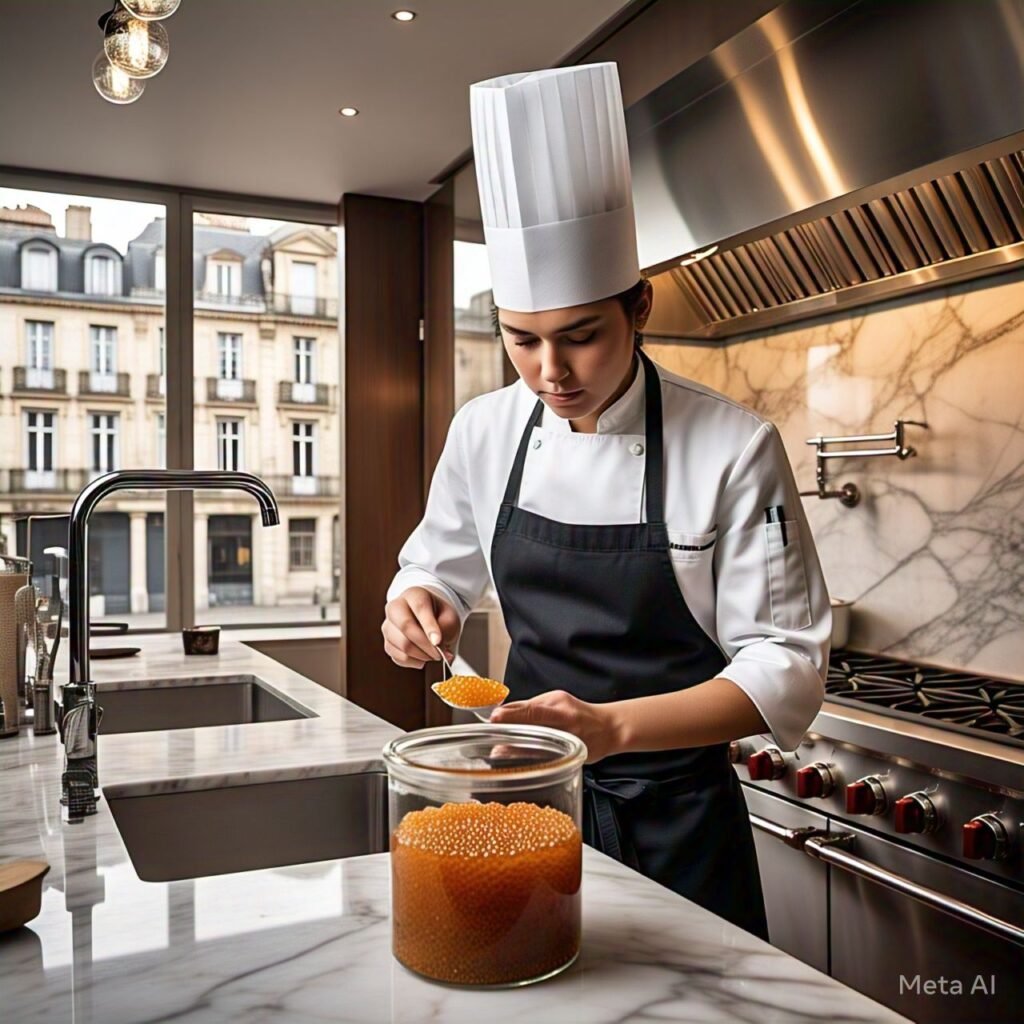
One of the most opulent and costly foods in the world is caviar. However, caviar isn’t always a stuffy meal that’s only served at the most expensive places. Visitors enjoy the superb Aquitaine caviar made on a sturgeon farm at Caviar de Neuvic, which is situated in the South West of France, approximately an hour from Bordeaux.
A trip to Caviar de Neuvic is not only delicious but also entertaining and enlightening. In addition to learning that caviar is a Bordeaux specialty and that the Bordeaux region is France’s greatest producer, guests also discover that France is the third-largest producer of caviar globally.
Caviar de Neuvic uses sustainable practices, and all caviar in France is produced through farming. Visitors who are brave enough can put on a pair of waders, enter a pool with some of the male sturgeon, and try to catch one like the staff do before they can sample the caviar.
Jennifer from “Bordeaux Travel Guide” tested her sturgeon-catching prowess since she felt that she would regret not trying. The fish move quickly and are rather large. Feeling proud that she had captured one, she posed for a picture, and as soon as the shutter pressed, her sturgeon struck her in the face with his tail, almost knocking her to the ground. She stayed dry better than the waders could.
After the sturgeon capturing attempt, you’ll undoubtedly feel like you earned your caviar tasting! It’s undoubtedly a singular experience that you shouldn’t pass up when visiting Bordeaux.
The Paris, France, Montmarte culinary tour
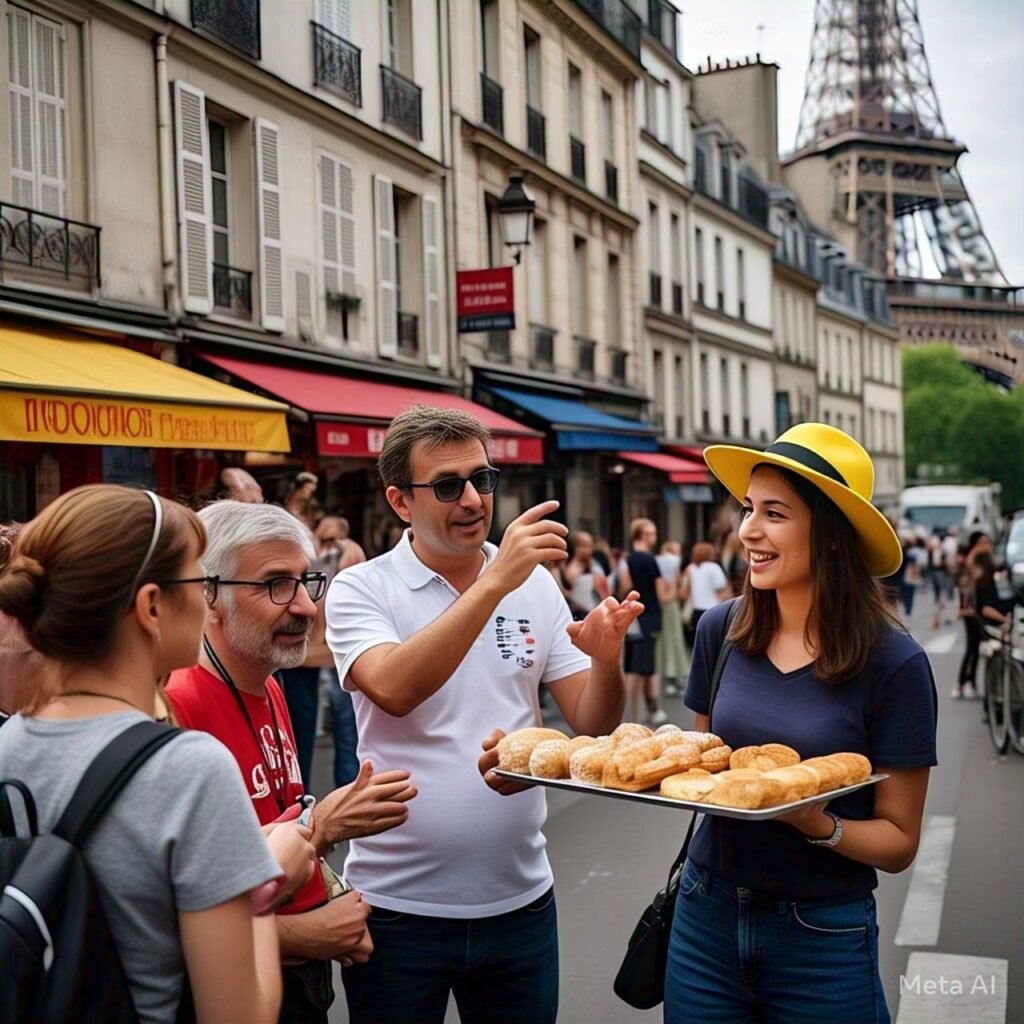
A walking culinary tour of Paris’s Montmartre is the ideal way to enjoy European cuisine. Paris is a fantastic place to visit, whether it’s your first time or your twenty-first.
A local Parisian will greet you and be happy to show you all of Montmartre’s top dining and shopping options. You will want to try most of what you see, so make sure you arrive hungry. In addition to touring the produce market and stopping by the neighborhood butcher and fishermen, your guide will describe how Parisians shop every day for their fresh food.
You’ll visit some of Paris’ top boulangeries, such as Le Grenier à Pain, which has won the city’s best baguette award multiple times. Don’t miss the fougasse with goat cheese and figs, which is one of the house specialties.
You’ll also eat at a charming sidewalk cafe and admire the lovely neighborhood while on your walking tour. The history of this distinctive area of Paris and the reasons why so many writers and artists still call it home will be covered by your local guide.


